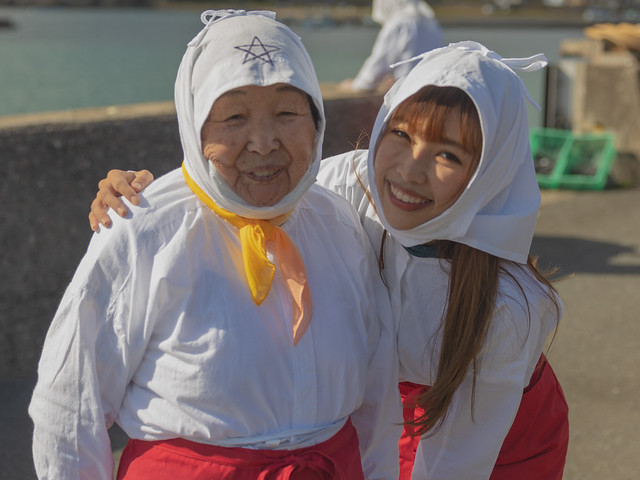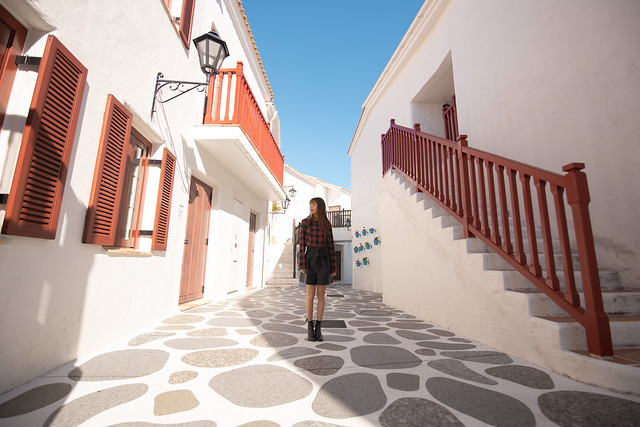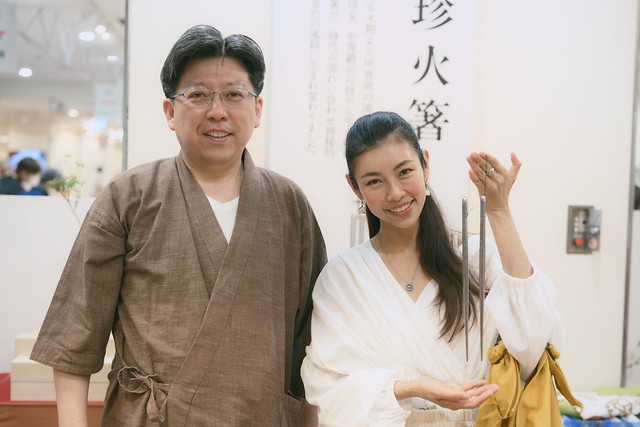I didn’t expect to be back to Mie and writing about Mie again so soon! (To think that my very post below is exactly Mie… either the prefecture loves me too much or I am obsessed with it, or both, at this rate I’d like to think it’s deep mutual affection.)

Although many of the destinations I feature in this post are repeated attractions I have visited several times in Mie prefecture before, it is always a pleasure to be back again, meeting the same people at a different time, feeling a different vibe in a different season, experiencing a brand new journey altogether. It’s something I don’t mind doing over and over again.
Here’s a complete itinerary for your future reference, focusing on Mie Prefecture as a whole, based on a 3-day itinerary.
From Tokyo to Mie
Fortunately, getting into Mie no matter where you are is a breeze. Since I am happily corona-stuck in Tokyo since March this year, it was easy for me to hop on a Tokaido Line Nozomi shinkansen at 07:09, reaching Nagoya Station by 8:45, and catch the adorably bright yellow Ise-Shima Liner bound for Kashikojima into Mie Prefecture.


Ise-Shima Liner
Let’s go!
DAY 1
Toba City

Toba Station
For the past few times I usually started my journey in the Ise-Shima region, this time I headed straight to Toba city to visit my favorite ama!
Ama Hut Hachiman

Ama at Amam Hut Hachiman
You have probably seen these amazing women in my past blog posts several times before, meeting them the second time only had my respect for them deepened even further.

To get to Ama Hut Hachiman, you can take the free shuttle bus from Toba Station which takes you straight to the humble little hut by the seaside in about 20 minutes.

If the hut is not extremely busy, several ama will greet you with a brimming grin on their faces. Well, behind masks, at the moment, but rest assured their warmth is ever present!
In case you have forgotten, ama, written 海女 in Japanese (not to be confused with our Asian 阿嬷 haha), are female divers who have been carrying this free-diving tradition for thousands of years in the local waters of Japan, especially in Toba & Shima region.

Unfortunately as culturally intriguing as ama divers are, it is a dying tradition, as not many young girls would opt to stay in the village and dip into ice-cold water every day including winter time, so all the ama you meet here are of good mature age, with the oldest being 89 years old!

Reiko san
And that’s Reiko san, the legendary ama in Ama Hut Hachiman. I have featured her before here, but it is just so heart-warming to know that she’s doing so so well, and as energetic and as cheery as ever. There’s this warm fuzzy feeling inside me whenever she smiles at me… it’s therapeutic, to say the least. I call her the “walking power-spot”. Hahaha.
The ama team will be grilling fresh seafood while you just sit and enjoy what is served on your tray. Usually the lunch set consists of several types of shellfish, and Ise-ebi lobster, if you opt for the more luxurious course.



Of course, as usual, the ama will be giving a small sharing session, musing about their daily life and diving experiences, and you can also join them in a cute little dance. I love it!

I’m looking forward to meeting Reiko san next year, and the year after…
Toba Aquarium

Here’s one attraction in Toba City I had not been – the Toba Aquarium. Kids are gonna love it. Each aquarium in Japan boasts of being best in something, and for Toba Aquarium, being a really extensive facility, pride themselves in rearing the most numbers of species in Japan!

Their star icon in the facility is the colossal dugong, and you also get to explore 1200 other species of aqua lives gathered from around the world. Just to illustrate how comprehensive this aquarium is, there are a total of 12 zones including the Ancient Sea housing unique aquatic creatures known as “living fossils”, Coral Reef Diving that’s visually enhancing that visitors feel like they are diving into a beautiful reef, Mermaid Sea, where Serena, the 34-year-old dugong resides in, and other equally attractive zones such as Woods of Miracle, Polar Sea, Sea of Ise-Shima and around Japan, etc.

I especially enjoyed staring at the cappybara so calmly staring at the gold fish so curiously staring back at the capybara…
Pearl-harvesting at Mieken Pearl
I have visited the eternally famous Mikimoto Pearl Island in my previous trip to Toba, and today I came to another place of interest all about pearls for a really fun-filled experience – Mieken Pearl (三重県真珠).

At Mikimoto Pearl Island, you learn about pearl-cultivation, which is really eye-opening and you may read more in my previous article about Mie. Here at Mieken Pearl, you get to experience not only pearl-harvesting, but turning the precious gem into an accessory of your choice!


First of all you can pick a shell that you like, retrieve the pearl inside it, and decide what kind of accessories you would like it to be.

There are choices of phone straps, pendant, necklaces, earrings and so on.

For me I made a cherry blossom pendant!
Here’s a short video of Mieken Pearl:
View this post on Instagram
Toba Grand Hotel

I often sigh about how beautiful the Ago Bay is, and I have come to realized that the Toba Bay is equally stunning.

Toba Grand Hotel, located on a hillside offers a splendid view of coastal charm, with an outdoor onsen of the same view.

As a safety measurement, you may also choose to dine in your own room at the hotel.

Dinner features mostly fresh seasonal seafood , and there’s a special creamy “pearl soup” that’s unique only to this region.
DAY 2
Shima City
Shima Mediterranean Village

It’s challenging to travel out of our respective home country let alone hoping across continents given the current situation we are in. Visiting Shima Mediterranean Village however, lets one enjoy an visually pleasing mini journey around the Mediterranean sea – a stroll to discover all sorts of Andalusia charm, taking in gorgeous view of Mykonos coastlines, sipping cappuccino at a Sardinian cafe, before you hop for a pampering Turkish hammam bath…



Right in Japan. More precisely, Shima region of Mie Prefecture, Japan.
I have featured this in my article last year, so hop over for more info.
Ise City
Ise Shrine
This is my 5th time writing about Ise, I believe Ise Shrine is no stranger to my long time readers now.

Here’s something new I learnt this time, though – that hundreds of years ago in Japan, common villagers spent their entire lifetime in the hometown they were born. The only one time that they ever left their birthplace is the once in a life time pilgrimage to Ise Shrine.
And… that’s the origin of the concept of “traveling” in Japan!
What an amazing and significant travel destination Ise Shrine is, don’t you think? We are so lucky to be able to freely see the world these days, although right now we will be taking a small break… But the day will come again soon, I believe.

For more content about Ise Shrine and its surrounding area, you may refer to this article I wrote last year.
Wakamatsuya Kamaboko Workshop

Enjoy the famous Ise Kamaboko (Japanese fish cake) at Okage Yokocho? Here’s the original shop – Wakamatsuya, established over 100 years ago in Ise city, where you get to hand-make your very own Kamaboko!

Wakamatsuya offers hands-on classes for visitors to learn two different types of kamaboko making: Steamed Kamaboko and Broiled Kamaboko.

Broiled Kamaboko

Steamed Kamaboko
You can enjoy your own handmade Broiled Kamaboko freshly broiled on the spot and bring the Steamed Kamaboko back to hotel as a night snack.
As Wakamatsuya Kamaboko does not contain any artificial coloring, seasoning, or preservatives, do consume your freshly steamed or grilled kamaboko within 3 days.
Workshop fee is JPY1,500.
Tsu City
Tsu City is the capital city of Mie. Despite multiple and frequent visit to Mie, I am slightly embarrassed to say that I have never thought about exploring this central hub of Mie prefecture. There are a ton of attractions in Tsu city alone, unfortunately for this trip, the city yet again only served as just a brief transit to my next destination, Iga. (Honestly, there’s just too much to see in Mie and I suspect even one week barely allows one to scratch the surface of this surprisingly rather low-key tourist destination.)
However I did stop by a really fun place that both adults and children would enjoy.
Oyatsu Town
Do you know the famous ramen snack “Baby Star“?
Oyatsu Town – literally means “snack town”, is a newly opened snack theme park (wait what? How can a theme park sound so yummy??) in Tsu City last year.
Before you even enter the park, your inner child creeps out upon seeing the massive building painted in all sorts of adorable illustrations of Hoshio-kun, the naughty mascot of Baby Star and a giant pack of Baby Star pouring from the sky into a bowl-bench.

Once you step foot indoor and are greeted by the Dodekai (literally means “super big”) Hoshio-kun Slide and a crazy kaleidoscope tunnel, your inner child is no longer controllable and now is running amok… so let it. I literally squealed each time I explored a different attraction in the park, given how I really adore this crunchy noodle snack.

Kaleidoscope Tunnel

Dodekai Hoshio-Kun Slide

Know that there’s also a Hoshio-Kun Kitchen where you can customize your own Baby Star with unique flavors, lots of fun games for both adults and kids, a Secret Oyatsu Lab where no adult is allowed in (not even for media coverage so you can only sneakily ask your child to describe their experience to you), shop for original and limited goods and Baby Star products at Oyatsu Marche, etc!
Of course, every corner of Oyatsu Town also earns you some Instagenic points so the admission fee of JPY700 for adults and JPY450 for children is literally nothing. Just make sure your luggage won’t explode with all the irresistible shopping.
DAY 3
Iga city
Ninja Museum of Igaryu

I have written past content on this special attraction in my post on Iga before, and here’s my second time back, feeling just as excited as the first.

To get a more realistic feel of these masters of shinobi, instead of fiery red I picked an all-black ninja costume instead, this time around. But you probably already know from my posts that the real ninja wore what every other civilian wore, and this clad-in-all-black attire only happened because of classic Kabuki shows, where ninja characters were dressed as dark as possible to imply stealth and to surprise the audience.

Watch the amazing ninja show performed by trained ninjutsu expert using real life weapons that ancient ninjas had devised since Edo period.

There are tons to learn about ninja in this ultra-fun museums. Did I mention already? Every time I revisit a destination, I bring back new knowledge with me. For example, as ninja’s primary purpose is to collect information in stealth, so they are required to have extraordinary memory capacity. For really important information that is unforgivable if forgotten, a ninja may injure his own body on purpose as a way to recall the information. For another example, ninja mostly avoid eating meat and strong smelling food as body odor is fatal in terms of getting spotted by an enemy.
All in all, the art of ninjutsu is more than just shuriken hurling and dashing at the speed of light – it is an impressive collection of wisdom and skills for survival.

And you will learn all of these from real life modern ninja at Ninja Museum of Igaryu.

Bonus: there’s the Iga Ueno Castle at the Ueno Park located just a short walk from the museum. Despite being rather new compared to other world-famous castles in Japan, there are some special interest and treasures for castle enthusiasts and history buff alike to drool at, such as an alluring collection of Kabuto as well as legacy of wandering poet and native of Iga Ueno, Matsuo Basho.
Suzuka City
Suzuka Circuit

Rejoice, auto racing fans (or mat rempit alike haha)! Here’s a place you can go wild with all your racing fantasy – the legendary Japanese racing track opened half a century ago where the world’s top racers in Formula 1 and other events take place.

Other than world-class international racing events, the racing course is also open for amateur drivers/riders for training and even school programs to train future potential racers.

Despite its grown-up vibe, Suzuka Circuit actually thoughtfully created a perfect environment to nurture junior racers by equipping the entire fscility with fun-filled interactive activities that will spark interest of the young-aged.

There are also go-kart courses of different difficulties so pick the challenge you are comfortable with!

Yup that’s me all geared up! Get your friends and family to join so you can compete against each others for best time records.
Not a fan of speedy automobile? No worries. While your F1/GP-crazy partner swoon over exhilarating go cart and motorsports gallery, you can take your offspring, if you own any that is, to the kid-friendly amusement park next door for some outdoor fun from gentle rides that are perfectly safe for toddler to adventures just challenging enough for older siblings.

Don’t forget to grab yourself some pretty humorous snacks on the way back at the souvenir store, such as this “Tyre Shaving Dried Squid”, where it is made to look just like tyre shavings left over on the tarmac.
By the way, there are even racing-themed hotel rooms if you fancy a night’s stay and even hot spring!! What can I say? #onlyinJapan, really.
Kuwana City
Remember how we started our journey from Nagoya, took the train directly to Toba? We have now travelled all the way around back up and we are reaching Kuwana city, which is just neighbouring Nagoya city.
Here’s one last stop you absolutely must not miss before returning to Nagoya.
Nabana no Sato
I have introduced this beautiful botanical garden in my previous article on Kuwana last summer. The best timing to visit Nabana No Sato is actually winter time, where the entire park is beaming with millions of colorful LED lights as it launches its night illumination, one of the largest of its kind in Japan.

Nabana no Sato Begonia Garden
The tropical Begonia Garden is eternally popular with its evergreen floral in all dazzling hues, but the real highlight of this trip, of course, is the 200-meter long “Tunnel of Light” filled with vibrant colorful lights which went so viral it’s famous overnight all over the world now.

Nabana no Sato Tunnel of Light

This is this year’s special light-up installation called the Miracle Tree. It was as if I have entered a fairyland filled with fantasy and dreams… it was truly magical. I have seen a lot of light festivals before but this was incredibly moving, and I am particularly impressed with the pastel rendering of lights in such subtle, dreamy hues.
Entrance fee to Nabana no Sato is JPY2,300, which is pretty reasonable for an attraction of such a large scale. However there’s even something better – with each ticket purchase you also get a JPY1,000 cash voucher where you can spend on dining or souvenir, making the ticket fee a mere JPY1,300.
Totally worth it if not overly affordable, I’d say.
What a perfectly romantic way end my trip this time to Mie.
I hopped on a bus departing Nabana no Sato heading towards Nagoya station, and took a short train ride into Gifu prefecture.
My Gifu journey continues, stay tuned!!
Meanwhile, check out JAPAN by Japan for travel ideas, itinerary and a chance to win a pair of return flight tickets to Japan!














